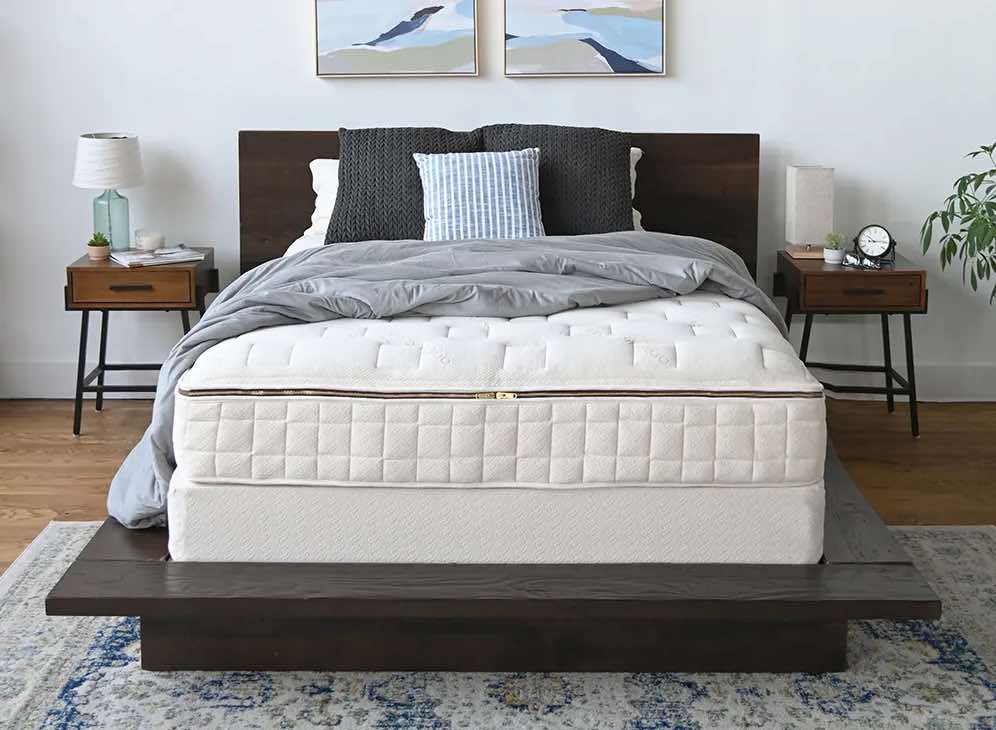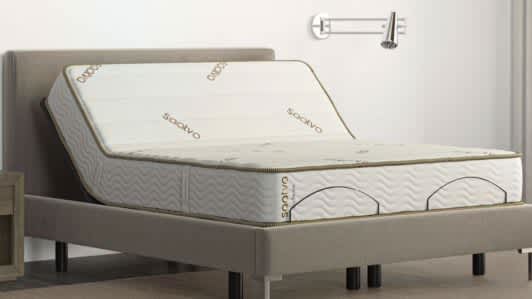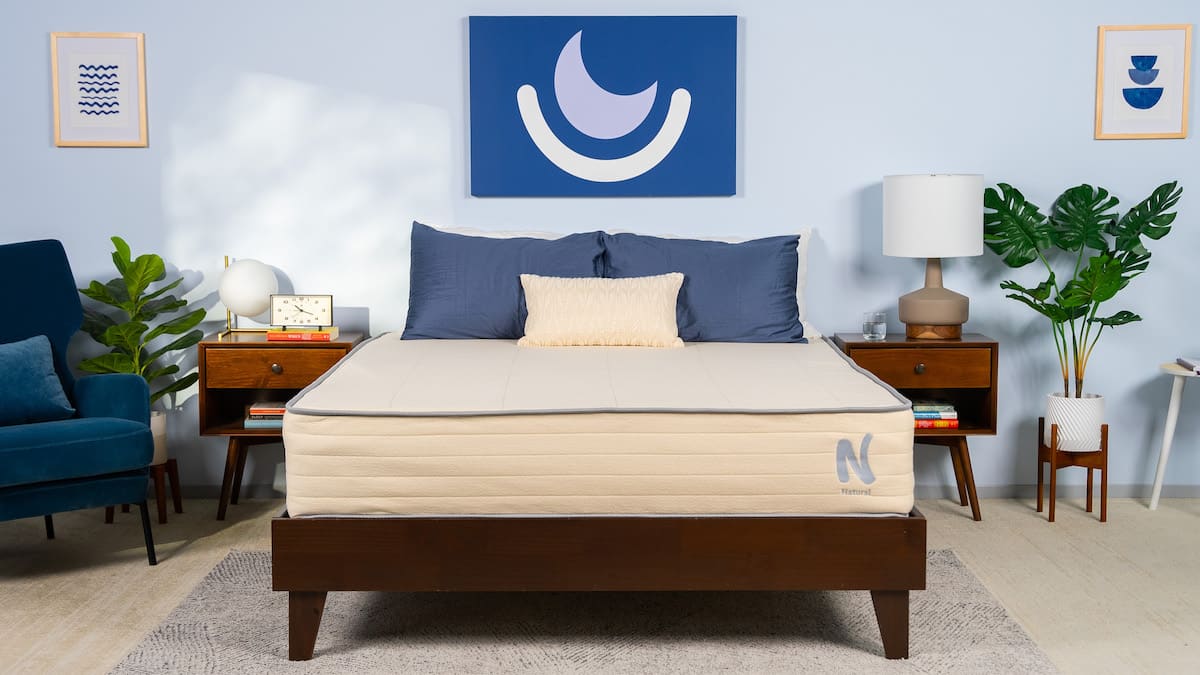On This Page
The Best Mattress for Allergies
Our Top Picks
-
Best Overall Mattress
Birch Mattress -
Most Comfortable Mattress
Naturepedic EOS Classic -
Best Luxury Mattress
Zenhaven -
Best Mattress for Pressure Relief
Nolah Natural 11 -
Best Cooling Mattress
Brooklyn Bedding Aurora Luxe
Best Overall Mattress
The Birch Mattress features a latex and coil design topped with cotton and wool layers to cushion your body. All the materials are known for their breathability, so we highly recommend this model for hot sleepers.
Pros & Cons
Pros
- Breathable construction limits heat buildup and moisture retention that could otherwise fuel microbial growth
- Latex and wool excel at thermoregulation
- Certifications from eco-INSTITUT and GREENGUARD Gold ensure low volatile organic compound (VOC) emissions
Cons
- Not suitable for sleepers sensitive to latex or wool
- Side sleepers under 130 pounds may benefit from a bed with more pressure relief
Ratings
Our Take
Most Comfortable Mattress

The Naturepedic EOS Classic is one of the most customizable hybrids we’ve ever tested. The latex and coil model is available in five firmness levels with the option to customize firmness for each side of the bed. We recommend this bed for co-sleepers who have different comfort preferences.
Pros & Cons
Pros
- Interchangeable layers allow you to customize the feel
- Comes in wool-free and latex-free versions
- GOTS and GREENGUARD Gold certifications ensure organic sourcing and low chemical emissions
Cons
- Wool and latex model is not suitable for sleepers allergic to either material
- Above-average price-point
Ratings
Our Take
Best Luxury Mattress

The Zenhaven is an all-latex model with a flippable design that provides a different firmness level on each side of the mattress. Most testers on our team found a side that suited their sleep position and personal preferences.
Pros & Cons
Pros
- Wool is GOTS-certified and latex is GOLS-certified to guarantee organic sourcing
- Latex and wool provide natural cooling properties
- Dual-sided design offers two firmness levels
Cons
- Not ideal for sleepers with wool or latex allergies
- Produces noticeable motion transfer
Ratings
Our Take
Best Mattress for Pressure Relief

The Nolah Natural 11’s latex layers and coil core are well-suited to sleepers who need solid support with gentle cradling on the surface. Most testers on our team found this comfortable, regardless of their sleep position.
Pros & Cons
Pros
- Cotton and wool are certified organic
- Latex and wool construction promotes breathability and temperature regulation
- Certifications from GREENGUARD Gold and eco-INSTITUT verify that the mattress meets high standards for VOC emissions
Cons
- Co-sleepers may feel movement when their partner changes positions
- Side sleepers under 130 pounds with sharp pressure points may prefer a mattress with more give
Ratings
Our Take
Best Cooling Mattress

The Brooklyn Bedding Aurora Luxe uses copper, cooling gel, and heat-dissipating phase change material to maintain a comfortable surface temperature at all times. As a result, the mattress outperforms many competing foam hybrids in terms of breathability and thermoregulation.
Pros & Cons
Pros
- Cooling infusions prevent excessive overheating on the surface
- Zoned coils with perimeter reinforcement provide excellent stability
- Available in three firmness levels
Cons
- Foam layers may hinder movement on the surface
- Firmness exchanges not allowed during the sleep trial
Ratings
Our Take
Compare Our Top Picks
| Mattress | Mattress Type | Ideal For | Value | Sleep Trial |
| Birch Mattress | Hybrid | People With Back Pain | Good Value | 100 nights (30-night requirement) |
| Naturepedic EOS Classic | Hybrid | Couples | Great Value | 100 nights (30-night requirement) |
| Zenhaven | Latex | Hot Sleepers | Good Value | 365 Nights ($99 Return Fee) |
| Nolah Natural 11 | Hybrid | Side Sleepers | Good Value | 120 nights |
| Brooklyn Bedding Aurora Luxe | Hybrid | Hot Sleepers | Good Value | 120 nights (30-night requirement) |
If you frequently get allergic reactions from contaminants like mold and dust mites, I recommend keeping an eye out for beds made of latex or high-density foam. These materials help keep common allergens at bay.
Benefits of a Hypoallergenic Mattress
Sleeping with allergies is often a challenge. Common symptoms, such as nasal congestion, are associated with poor sleep quality, which may then impact your productivity and quality of life the following day. A hypoallergenic mattress can help limit allergens in the bedroom environment, potentially reducing symptoms for sleepers with allergies.
Even sleepers without allergies may prefer to reduce their exposure to dust mites, mold, mildew, pollen, and other contaminants. Individuals with sensitive skin, asthma, or other respiratory issues may benefit from a hypoallergenic sleep surface that limits exposure to these irritants. Additionally, some parents prefer a hypoallergenic mattress for their children in order to maintain a more hygienic sleeping area.
What Is the Best Mattress Type for Allergies?
Depending on the nature and severity of your allergy symptoms, any of the most common mattress types may be appropriate for you. While some mattresses tend to be better suited to sleepers with allergies than others, individual models vary significantly. We recommend paying attention to materials, construction, and overall quality to choose what’s best for you.
| Mattress Type | Description | Considerations |
| Foam | Foam mattresses are made with polyfoam or memory foam that closely molds to the sleeper’s body. These models typically offer significant pressure relief and motion isolation. | Memory foam and high-density polyfoam may be less susceptible to dust mites and other allergens, but off-gassing odors could be a challenge for those with chemical sensitivities. |
| Latex | Latex mattresses contain layers of natural, synthetic, or blended latex, though most use natural latex. This type of mattress is known for its responsiveness, temperature control, and durability. | Latex is naturally hypoallergenic when it comes to allergens like mold, mildew, and dust mites, but some sleepers may be allergic to the latex itself. Also, the surface may feel too bouncy for those who share the bed with a restless sleeper. |
| Hybrid/Innerspring | An innerspring mattress consists primarily of a coil core with little padding on the surface, whereas a hybrid model pairs a thicker foam or latex comfort system with a coil core. These designs tend to be breathable and responsive. | Hypoallergenic comfort systems can limit allergen exposure, and some designs feature covers with antimicrobial treatments, but coil systems or fiber padding could potentially harbor allergens. |
| Airbed | Airbeds typically combine a foam or latex comfort system with an air chamber core. You can adjust the firmness by filling or emptying the air chambers. | The price-point is typically higher than other mattress types, but air chambers are luckily not conducive to allergens and the comfort systems are frequently made with hypoallergenic materials. |
Video: Is a Latex Mattress Right for You?
Watch our video to learn more about whether a latex mattress is best for you and what to consider when shopping for one.
How to Make Your Bed Allergy-Friendly
Irritants or allergens in your bedding or mattress can contribute to uncomfortable allergy symptoms. Whether these symptoms are caused by dust mites, sleeping with a pet, or other allergens, making your bed more allergy-friendly could help you get a better night’s sleep.
Buy the Right Bedding
In addition to selecting a hypoallergenic mattress, try to find allergy-friendly bedding. Allergens can build up in your sheets, blankets, pillows, and other bedding materials, so look for options that are easy to clean and designed to resist allergens.
- Sheets and Blankets: Smooth, tightly woven fabrics tend to be less prone to allergen buildup. Many sleepers with allergies prefer breathable, natural materials, such as cotton, wool, and silk. Air circulation can help reduce the risk of mold or mildew, while natural materials generally contain fewer chemicals and dyes that sleepers might be sensitive to.
- Pillows: Memory foam and latex pillows are usually among the top options for sleepers with allergies. Down and feather options often trap moisture, potentially promoting allergy-inducing mold growth. Additionally, pillows with loose fiber fill may harbor dust mites.
Clean Your Bed Regularly
Cleaning your bed environment helps remove allergens from your sleep space. We suggest washing your sheets weekly to reduce the allergens you’re in contact with. You can also clean your mattress by stripping it and vacuuming the surface with an upholstery attachment. We generally recommend doing this every six months, though individuals with allergies may prefer to do it more often.
A mattress protector can also provide an extra barrier between you and your mattress. If allergens have already accumulated in your bed, a mattress protector could limit your exposure. If your mattress is new, a protector can help prevent allergen buildup that might otherwise shorten its lifespan.
Additional Tips for Sleeping Soundly With Allergies
In addition to buying the right mattress and bedding and keeping them clean, people with allergies can take other steps to get better rest.
- Use an air purifier: A high-quality air filtration system helps remove airborne particles.
- Avoid sleeping with pets: Pet dander can trigger allergy symptoms for some sleepers, so sleeping with pets in the bed might exacerbate allergies and may also track other allergens into your bedroom.
- Shower before bed: Dust and pollen may linger on your skin and hair. Showering before you go to sleep reduces the amount of allergens you bring into your bed.
- Clean your bedroom regularly: Vacuuming, dusting, and regularly cleaning any fabrics and surfaces in your bedroom can reduce allergen buildup.
- Limit outdoor allergens: Leave your windows closed and keep any clothing that you’ve worn outdoors away from your bed.
- Consult your doctor: Discuss your allergy symptoms with a medical professional to investigate the potential causes. Your doctor may recommend a course of action to help you get better sleep.
Discover More Mattress Solutions
If you’ve narrowed down the type of mattress you want but need more options, check out our testing team’s picks below.
Best Mattresses by Type
How We Test
We rely on extensive lab-based product testing to help you choose the right mattress. Our testers vary in body type and sleep position to ensure our mattress evaluations are inclusive of many different sleepers. Before choosing our picks for the best mattresses for allergies, we tested dozens of top contenders using our product testing methodology and assessed their materials and performance.
Frequently Asked Questions
The best mattress for allergies typically contains hypoallergenic materials and resists mold, mildew, dust mites, and other allergens. Many sleepers with allergies also prefer natural materials to limit their exposure to chemicals that could cause irritation.
Many sleepers with allergies prefer to lie on their side or on their back with their head propped up. Sleeping on your side can help keep your airway open, and elevating your upper body with extra pillows or a wedge pillow often helps alleviate congestion and postnasal drip.
If your allergy symptoms are more severe overnight or when you first wake up, your bed might be making your allergies worse. You can try laundering your bedding and cleaning your bedroom to see if your symptoms improve. If not, it may be time to consider a new mattress.
The best bedding for allergies is made with breathable, hypoallergenic materials that are easy to clean. Tightly woven fabrics and natural materials, such as cotton, wool, linen, and silk, may be beneficial for sleepers who have allergies. Since regular laundering is critical for removing allergens, ease of care may be just as high of a priority.
You can protect your mattress from allergens by selecting a model made with hypoallergenic materials, cleaning it periodically, washing your bedding regularly, maintaining a clean bedroom, and using a mattress protector. While some allergens may still accumulate on or in your mattress over time, regular care and maintenance can help reduce buildup and extend the mattress’ lifespan.
